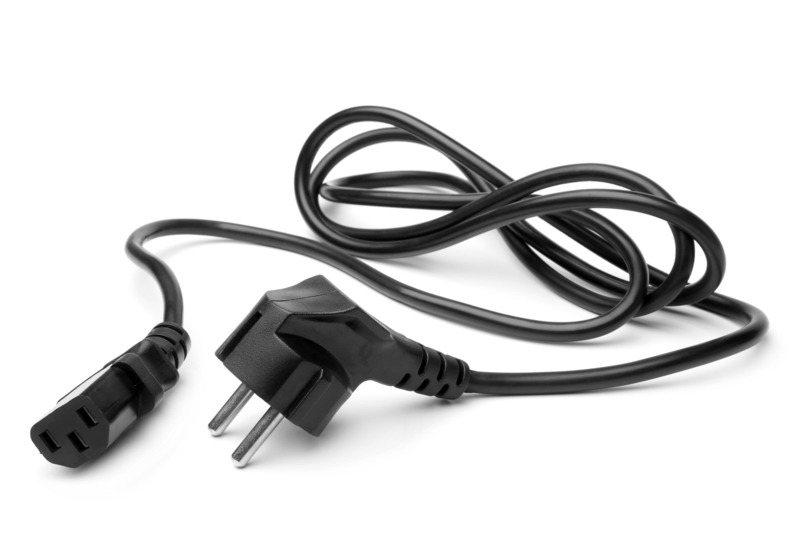Proven Strategies for Storing a Freezer When Idle
Posted on 14/06/2025
Proven Strategies for Storing a Freezer When Idle
Freezers are indispensable appliances in homes, restaurants, and various businesses. However, there are times when your freezer may go unused for weeks or even months, such as during a move, seasonal storage, downsizing, or renovations. Storing a freezer when idle is not as simple as unplugging it and leaving it in the garage. Without proper care, you risk unpleasant odors, mold, diminished efficiency, and even long-term damage. This comprehensive guide outlines the best practices, tips, and expert strategies for maintaining and preserving a freezer during periods of inactivity. Whether you own an upright or chest freezer, these proven methods will keep your appliance in optimal condition.

Why Proper Freezer Storage Matters
Understanding the importance of proper freezer storage during idle periods can save you money, prevent health hazards, and maximize the lifespan of your appliance. Freezers that aren't correctly prepared for storage can develop rust, interior mold, mechanical faults, and odors that are extremely difficult to remove.
- Odor Prevention: Food residues and moisture can lead to lingering smells.
- Avoiding Mold and Mildew: Trapped moisture creates the perfect breeding ground for these fungi.
- Electrical and Mechanical Safety: Idle freezers can suffer from dried out seals and electrical issues if stored improperly.
- Longevity: Proper maintenance during storage ensures your appliance operates efficiently when you need it again.
Step-by-Step Guide to Preparing Your Freezer for Idle Storage
1. Thoroughly Defrost and Clean the Freezer
Never store a freezer without first defrosting and cleaning it completely. Even a small amount of left-behind moisture or food can cause significant problems.
- Unplug the appliance: Always disconnect your freezer from the power supply before cleaning.
- Remove all contents: Empty all food, ice, and trays from the interior.
- Defrost naturally: Leave the door open to allow ice to melt. Place towels around the base to catch water.
- Clean thoroughly: Use a mixture of warm water and baking soda or mild soap. Scrub all surfaces, including baskets and compartments.
- Dry completely: Air out the freezer with the door open for several hours. Use a clean towel to wipe down excess moisture.
2. Neutralize Odors and Bacteria
After cleaning, it's vital to get rid of any lingering smells or microbes.
- Baking soda: Leave an open box of baking soda inside the freezer compartment.
- Activated charcoal: Place a small container of activated charcoal to absorb odors naturally.
- Vinegar wipe-down: For stubborn smells, wipedown surfaces with a 1:1 solution of vinegar and water.
- Leave open to air out: If possible, leave the door ajar in a well-ventilated room overnight.
3. Prevent Mold and Mildew
Mold thrives in dark, moist environments. Preventing mold in a stored freezer is crucial for ease of use when reactivating the appliance.
- Dry thoroughly: Any moisture left in trays, gaskets, or corners can promote mold growth.
- Open the door: Store with the door slightly ajar to promote airflow.
- Use a moisture absorber: Place silica gel packs or commercial moisture absorbers inside the freezer cavity.
- Inspect gasket seals: Ensure all rubber door seals are clean and dry.
4. Choose the Right Storage Location
The environment where you store your freezer when idle directly affects its condition.
- Temperature control: Avoid extreme heat or freezing cold. Garages and sheds are fine if their temperature doesn't fluctuate dramatically. Ideal range is 10?C to 32?C (50?F to 90?F).
- Dryness: Moisture leads to rust and mold. Select a well-ventilated, dry location.
- Elevate the unit: Place the appliance on a pallet or blocks to avoid direct contact with the floor, minimizing the risk of rust from concrete moisture.
- Away from sun and rain: Direct sunlight can crack and fade exterior plastics; water ingress can ruin electricals.
5. Protect the Exterior and Interior
Shielding your chest or upright freezer from dust, grime, and accidental scrapes ensures it looks and operates like new.
- Cover lightly: Use a breathable appliance cover or cotton sheet. Avoid plastic tarps, which trap moisture inside.
- Loosen doors: Some models allow you to disengage the latch so the door stays ajar without damaging gaskets.
- Label if necessary: If storing with other appliances, label power cords and handles for easier identification later.
6. Maintain the Appliance During Storage
Even when idle, your freezer should be checked periodically if stored for more than a couple of months.
- Monthly inspections: Open the door, check for moisture, mold, or pests, and wipe down as necessary.
- Review seals and gaskets: Ensure rubber seals haven't dried out or cracked; apply a light coat of petroleum jelly if needed.
- Remove and replace odor absorbers: Refresh baking soda or charcoal every three months.
Common Mistakes When Storing a Freezer Idle
Avoiding common pitfalls is essential for prolonged safe freezer storage:
- Leaving the door closed: This traps moisture, encouraging mold, and bad odors.
- Forgoing cleaning: Even seemingly clean freezers can harbor crumbs and spills. Always clean first.
- Storing in wet areas: Basements and sheds with leaks or poor air circulation are risky.
- Placing heavy items on top: This can cause dents or damage to the freezer's lid and hinges.
- Using plastic covers: These do not breathe, leading to condensation inside.
- Persistent power connection: Don't leave it plugged in for months unless actively in use; this can waste energy and may be a fire risk in some situations.
Special Considerations for Storing Different Freezer Types
Chest Freezer Storage When Not in Use
Chest freezers are popular for bulk storage but require special care:
- Drainage: Most chest freezers have drain plugs. Open after defrosting to release all water.
- Basket handling: Remove baskets and clean them separately.
- Lid mechanism: Ensure hinges aren't under tension if storing with the lid ajar.
- Check bottom corners: These areas tend to hold residual water and are common spots for rust or mold buildup.
Upright Freezer Storage When Idle
- Shelves and drawers: Remove all interior shelves and bins to prevent moisture being trapped in hidden areas.
- Door seals: Upright freezer doors often seal more tightly. Wedge a small towel or purpose-built freezer spacer for airflow.
- Leveling feet: Make sure the appliance is standing level during storage to avoid warping the cabinet.
Reactivating Your Freezer After Storage
When it's time to use your freezer again after idle storage, follow these quick steps:
- Visual inspection: Check inside and outside for dust, pests, mold, or damage.
- Clean out absorbers: Remove baking soda, charcoal, or silica packs.
- Wipe down interior: A quick clean with a damp cloth ensures freshness.
- Examine seals: If gaskets are dry or cracked, replace them.
- Let it run: Plug in and allow 24 hours at running temperature before loading food.
Safety Tips for Freezer Storage When Idle
Protect your appliance and your property with these freezer storage safety practices:
- Child safety: Never store an old freezer with the door attached in an accessible area--children can become trapped. Secure the door or remove it entirely.
- Appliance cords: Coil and secure the power cord to prevent trips or frays.
- Out of high-traffic zones: Avoid keeping idle freezers in pathways where they can be bumped or tipped.
- Pest prevention: Check regularly for ants, rodents, or other pests nesting underneath or inside.
Frequently Asked Questions About Storing a Freezer When Idle
How long can a freezer be stored when not in use?
With the right preparation, a freezer can be stored for several months or even years. Best results are achieved with periodic checks and proper environmental control.
Can you store a freezer unplugged?
Yes, but always ensure it's cleaned thoroughly, well-dried, and the door is kept ajar to prevent odor and mold buildup.
Should you cover a freezer during storage?
You can cover your freezer with a breathable fabric to protect from dust. Never use airtight plastic covers as these trap moisture inside.
Is it safe to store a freezer during winter or cold weather?
Extreme cold is typically not harmful, but freezing temperatures can cause plastic and seals to become brittle. If possible, store in a temperature-controlled environment.

Conclusion: Smart Freezer Storage Keeps Your Appliance Ready for Action
Whether you're clearing out space, moving, or simply need to put your freezer into long-term storage, these proven strategies for storing a freezer when idle will ensure a trouble-free restart when you need it next. Remember: Clean it well, dry it completely, store with airflow, choose the right location, and check it periodically. By following these simple but effective tips, your freezer will remain safe, odor-free, and ready to keep your food fresh for years to come.
Checklist for Storing a Freezer When Idle
- Unplug and defrost the freezer
- Clean thoroughly with baking soda solution
- Dry all surfaces and components fully
- Neutralize odors with baking soda or charcoal
- Use a moisture absorber inside
- Store in a dry, temp-stable location--elevated off the floor
- Keep the door slightly ajar or use a spacer
- Cover lightly with cotton, avoid plastic covers
- Check monthly for moisture, mold, or pests
Bookmark and refer to this expert guide any time you're planning short-term or long-term freezer storage. A little preparation pays off with years of reliable freeze power--and none of those nasty surprises!






